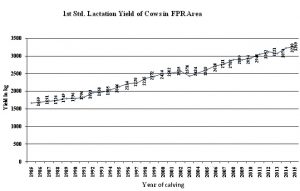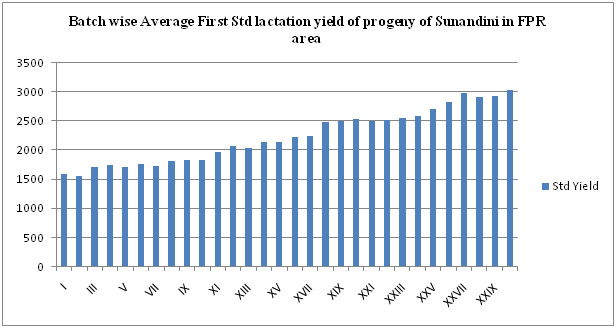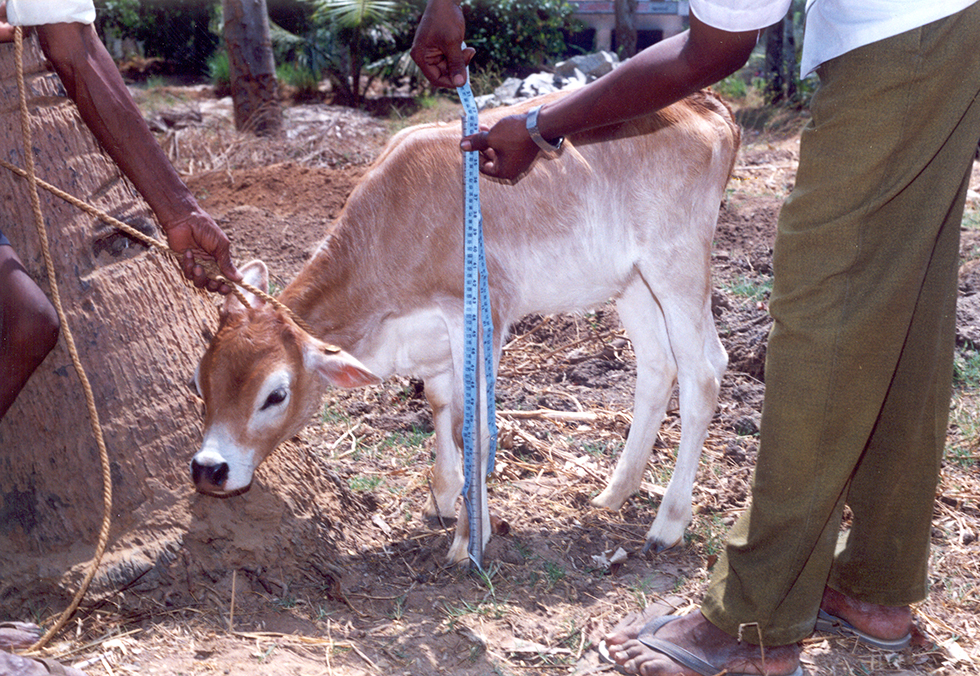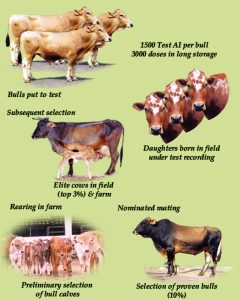Sire Selection Programme
With the objective of identifying the most suitable bulls as the sires for the next generation, the KLDB ventured into the field progeny-testing programme involving the two basic tasks viz Production of the required number of daughters per bull in the progeny testing programme and Milk recording of all available daughters of each bull to assess its production potential .
The progeny-testing programme was started as a joint project of the State and Central Government in 1977.Considering the density of cattle population and diversity in the geography among the locations, the ICDP regions of Mavelikara, Kanjirappally, Vaikom and Kattappana were selected for carrying out the inseminations using semen From the young Sunandini bulls (Test bulls), 1500 test inseminations are being carried out using semen from each bull tested with the intention of obtaining at least 50 completed first lactation records from the progeny. Due to reasons like migration, death etc. a considerable proportion of the female calves born to the test bulls would not be available with the farmers when they reached the first calving and the ensuing lactation stage. Non identification of the female calves born out of test inseminations is also a contributing factor.
Test Inseminations
Test inseminations started during the year 1977 with 10 bulls being included in the first batch. More than 20 lakh test inseminations had been carried out till the end of March 2017.
Field Performance Recording
An effective system of FPR forms the backbone of the progeny-testing programme. FPR refers to the methodology to record the specific performance of an animal (milk, meat, egg, wool etc.) under normal farm conditions in the field. FPR, in the narrow sense has the aim to rank the animal of a defined population, based on performance data, in order to select the best one for further breeding and to eliminate the inferior one from the breeding system.
The overall milk production of daughters has been showing a steady increase over the batches. This steady progress observed is the result of a well organized selection programme coupled with the improved managemental practices.

Sire Evaluation
One batch of crossbred bulls is tested every year. 1500 doses of semen from each bull are used for test AI under the programme. 3000 doses of semen from each bull is preserved under long storage. All the bulls qualifying to be regular collection bulls are invariably included under the programme. The female progeny born out of the bulls are identified, registered and followed up at intervals of six months till their first calving. From the first lactation records of the female progeny (corrected for managemental influences and averaged for each bull) the breeding value of each of the sires is calculated and the bulls ranked accordingly. The top 10% of bulls from each batch is used for the production of the next generation of young bulls. Semen doses maintained under the long storage are utilized for the purpose. Unlike in the case of exotic dairy breeds under their home situations, the results of progeny testing of crossbred bulls under the existing field conditions are obtained at a time when the bull in question would have attained an age of 11-12 years. Factors like delayed age at semen collection, higher age of the daughters at first calving, etc. contribute to the delayed results.
A Sire directory incorporating the list of proven bulls was published by the Board for the first time during the year 1984. From then onwards sire directories are being published from time to time incorporating the bulls put to test and declared proven. Bulls upto the 30th batch have till now been included under the publications.

Herd book scheme

The Herd Book Scheme (financed by the Govt. of Kerala) runs complementary to the Progeny Testing Scheme. The female progeny born to the test bulls are identified and recorded under this scheme. They are followed up at half yearly intervals by way of girth measurements.
Objectives of the Herd book Scheme
|
|
|


